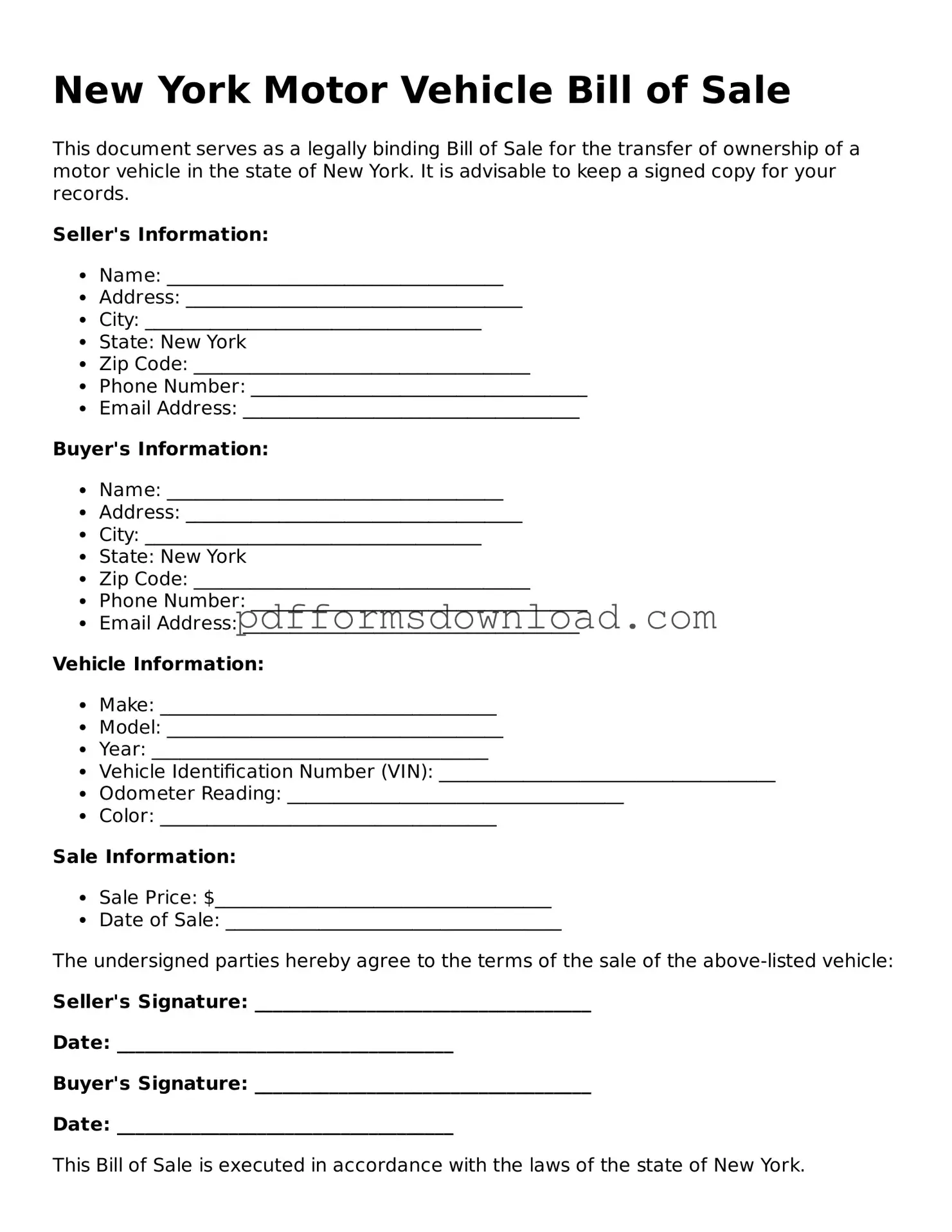What is a New York Motor Vehicle Bill of Sale?
The New York Motor Vehicle Bill of Sale is a legal document used to record the sale of a vehicle between a buyer and a seller. This form provides proof of the transaction and includes important details about the vehicle, such as its make, model, year, and Vehicle Identification Number (VIN). It serves as a receipt for the buyer and can be essential for registration and title transfer.
Do I need a Bill of Sale to sell a vehicle in New York?
While it is not legally required to have a Bill of Sale for every vehicle transaction in New York, it is highly recommended. This document protects both the buyer and the seller by providing a written record of the sale. It can help resolve any disputes that may arise regarding the terms of the sale or the condition of the vehicle.
What information should be included in the Bill of Sale?
A comprehensive Bill of Sale should include the following information: the names and addresses of both the buyer and the seller, the date of the sale, a description of the vehicle (including the make, model, year, VIN, and mileage), the sale price, and any terms or conditions of the sale. Both parties should sign the document to confirm their agreement.
Is there a specific form I need to use?
New York does not require a specific form for the Bill of Sale, but using a standard template can simplify the process. Many templates are available online, or you can create your own as long as it includes all necessary information. Ensure that the form is clear and easy to understand to avoid any confusion.
How does the Bill of Sale affect vehicle registration?
The Bill of Sale is an important document when registering a vehicle in New York. When the buyer goes to register the vehicle, they will need to present the Bill of Sale along with other documents, such as the title and proof of insurance. This document helps establish the buyer's ownership and the legitimacy of the transaction.
Can I use a Bill of Sale for a vehicle purchased from a dealership?
Yes, you can use a Bill of Sale for a vehicle purchased from a dealership, although dealerships typically provide their own sales agreements or invoices. If you prefer to have a Bill of Sale for your records, you can request one from the dealership or create your own to document the purchase.
What should I do if the vehicle has a lien?
If the vehicle has a lien, it is crucial to address this before completing the sale. The seller should ensure that the lien is paid off and released before transferring ownership to the buyer. The Bill of Sale should indicate whether the vehicle is sold free of liens, or it should include details about the lien if it remains at the time of sale.
What happens if I lose the Bill of Sale?
If you lose the Bill of Sale, it can be challenging, but not impossible. You may be able to recreate the document by contacting the other party involved in the sale and asking for their cooperation. If necessary, you can also provide any other documentation related to the sale, such as bank statements or receipts, to help establish proof of ownership.
